New
Learn how to plant and harvest easy-to-grow flowers and how to arrange them in a vase in this colorful two-page guide.
Kid-friendly, easy-to-grow flowers
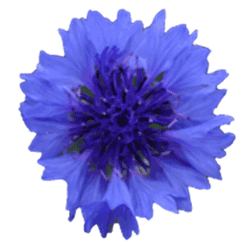 Bachelor button.
Bachelor button. 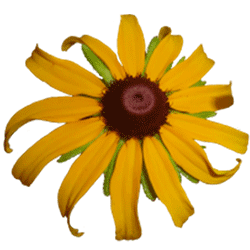 Black-eyed Susan.
Black-eyed Susan.  Celosia.
Celosia. 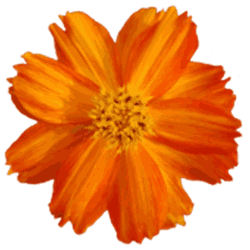 Cosmos.
Cosmos.  Dahlia.
Dahlia. 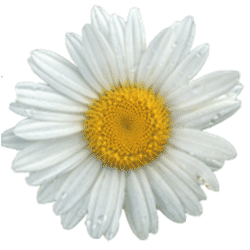 Daisy.
Daisy.  Gerbera daisy.
Gerbera daisy. 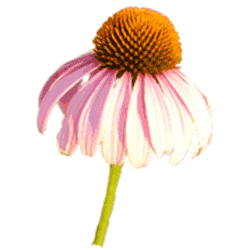 Coneflower.
Coneflower. 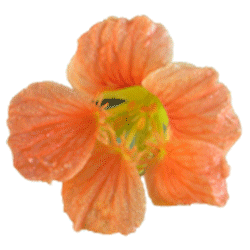 Nasturtium.
Nasturtium. 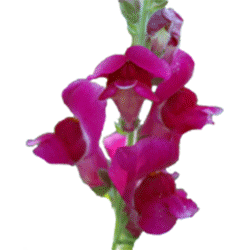 Snapdragon.
Snapdragon. 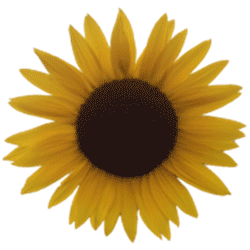 Sunflower.
Sunflower. 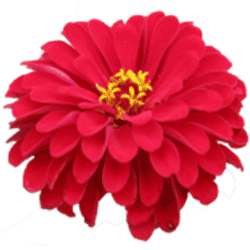 Zinnia.
Zinnia.
Other flowers: phlox, roses, marigold, globe amaranth, love-lies-bleeding, strawflower and peony.
Supplies
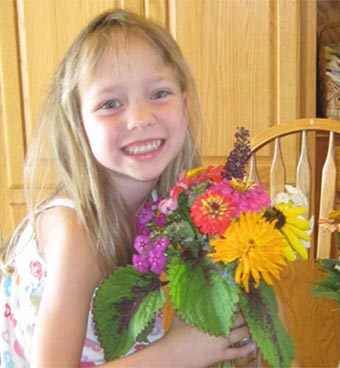 Kids love flowers!
Kids love flowers!
- Flower seeds - mixed sizes, colors, and bloom times
- Hand trowels and cultivators
- Watering can
- Balanced fertilizer such as 10-10-10 or 20-20-20
- Straw and mulch materials
Planning the cut flower garden
- Flowers can be planted in a new garden, and existing flower bed, vegetable garden or container.
- Plants need more than 8 hours of sun with well-drained soil.
- Decide what flowers to grow.
- Plan for mature size, shape and color difference.
- Choose showy, large flowers; small, delicate flowers; brilliant blazes of color; soft pastels.
- Look for varieties with long stems; some need staking.
Planting
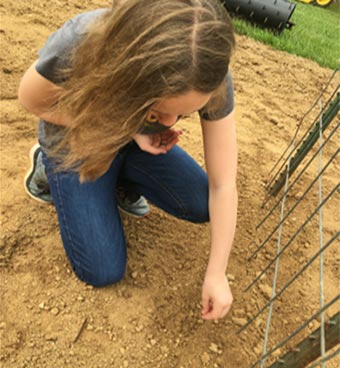 Plant seeds in rows or individual spots in the ground or container.
Plant seeds in rows or individual spots in the ground or container. After seeding, cover with a light layer of straw to protect from heavy rain.
After seeding, cover with a light layer of straw to protect from heavy rain.
- Purchase seeds and plants early; plant after last frost.
- If planting in the ground, prepare the seed bed by turning the soil, and raking level.
- Seed packets will have planting depth and directions.
- Plants transplanted in the ground need water immediately.
Maintenance
- Thin newly emerged plants if too thick.
- Supplement with water if needed.
- Fertilize twice a month with a well balanced fertilizer.
- Add 2 to 4 inches of mulch when plants are 6 inches tall.
- Removing dead blooms will promote longer blooming.
- Keep weeds out of flower bed.
- Stake flowering plants if needed.
Plant material
- Large blooms — zinnia, black-eyed Susan, sunflower, rose, Shasta daisy, marigold
- Small blooms — bachelor button, cosmos, phlox, marigold
- Showy blooms — celosia, snapdragon, love-lies-bleeding, grass bloom head
- Filler flowers — baby's breath, statice, dill flowers, queen Anne’s lace
- Greenery — fern, dill, basil, ornamental grass, feverfew, asparagus fern, peony leaves
Basics of flower arranging in a vase
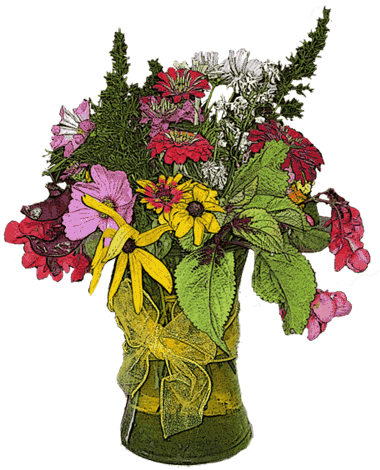 Supplies
Supplies
- Scissors or knife
- Vases with water
- Floral preservative (optional)
Directions
- Gather materials. Select flowers and vase of choice.
- Fill vase half full of water.
- As stems are selected, remove any foliage that will be below the water line.
- Recut stems at a diagonal as this allows for a larger surface area and greater absorption of water.
- Start by placing 6 to 8 stems of greenery in a criss-cross fashion to create the base.

- Select large flowers as focal points and measure the flowers against the vase to know where to cut the stems. Stagger the height to fill the vase and create an eye-catching design.
- Fill in with smaller, secondary flowers.
- Add filler to soften the open spaces and round out the arrangement.
- Replace water every other day and use floral preservative if needed.